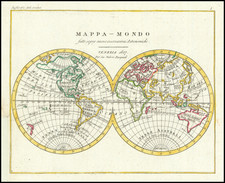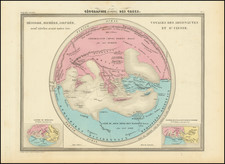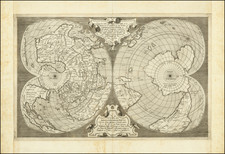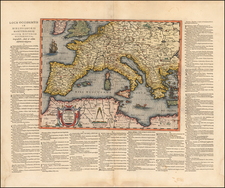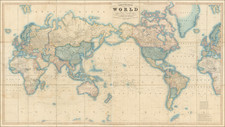Rare map issued in connection with the Mexican scientific expedition to Japan to observe the Transit of Venus in December 1874.
Mexico's connection to the astronomical constant began in the 18th Century. For the 1769 transit, Spain had granted permission to another French astronomer to join a party of Spanish astronomers setting up a temporary observatory near San José del Cabo on the southern tip of the Baja California peninsula. A short distance away, a Mexican astronomer Joaquín Velázquez de León had traveled from Mexico City to make independent observations. The next transit was in 1874. Large scientific teams were assembled by several countries including France, Russia, Germany and the USA, to collect better data for a more accurate calculation of the astronomical constant.
Mexico had a fledgling astronomy community, but decided it must send a team to Yokohama, Japan. The team consisted of:
- Francisco Díaz Covarrubias (the expedition's leader) who had written various books and had installed the first post-Independence astronomy observatory in Chapultepec Castle, Mexico City, in 1863.
- Francisco Jiménez - whose offical qualification was as a "geographic engineer". He had fought in defense of Chapultepec Castle when the USA invaded in 1847, written about the 1769 transit, and been a key member of the Mexican Border Commission which fixed the definitive Mexico-USA boundary in 1856. He helped coordinate research for the great map of Mexico produced by Antonio García Cubas. Jiménez was the first person to use telegraph signals to determine longitudes in Mexico with precision.
- Francisco Bulnes was the expedition's chronicler and the youngest member of the team.
- Agustín Barroso had wide interests in natural science and engineering, and became an early enthusiast of photogaphy and its applications to astronomy. He was responsible for the outstanding sequence of photos of the transit of Venus taken as part of the Mexican scientific expedition's work.
- Manuel Fernández Leal was an expert surveyor and educator who had also participated on the Mexican Border Commission.
The team traveled to Japan and were able to make valuable measurements. In fact, the results of the Mexican delegation were published much more quickly than did the astronomers from all other countries.









![[17th Century Provenance!] Universalis Tabula Iuxta Ptolemaeum](https://storage.googleapis.com/raremaps/img/small/72635.jpg)
